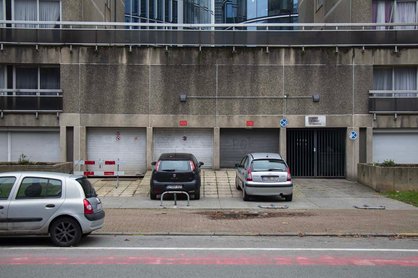
Antoine HORENBEEK
Contents
Understanding key concepts: carport, garage, shelter
Planning permission: when is it required?
What are the risks of building a carport or garage without a permit?
How can you check whether your carport or garage is in breach of the law?
What are the procedures for regularizing an illegal carport or garage?
Installing a carport or converting a garage without planning permission remains one of the most common mistakes... and one of the most risky for homeowners. Without prior authorization, these structures can infringe town-planning regulations, incur penalties and block future resales.
A carport or garage is subject to strict conditions regarding surface area, layout, height and distance from property boundaries.
Regularization is often possible, but requires a rigorous and comprehensive approach. This guide will help you identify the precise rules that apply, understand the compliance procedures and protect your property from unpleasant administrative surprises.
In Belgian urban planning jargon, a carport is a lightweight structure without solid walls, designed to shelter vehicles.
According to the French Code du Développement Territorial (CoDT), this is an accessory shelter, open on at least one side, built with materials that are easier to dismantle than a masonry garage. Wood, metal or other lightweight materials are typically used. As such, it is neither a living space nor a building in the strict sense of the term, which has a direct impact on the administrative procedures required.
The "classic" garage is an enclosed, solid construction with well-anchored foundations. It blends into the built environment and is an integral part of the home's annexes. Such a garage almost always requires planning permission.
On the other hand, a demountable shelter, even if it's called a "garage", can be considered temporary or mobile if it's not fixed to the ground and doesn't include any mains connections. This distinction, far from being insignificant, determines whether or not planning permission is required.
Town planning makes a clear distinction between these types of annexes. The carport is an open annex for parking vehicles. The garage, more massive and enclosed, fulfills the same role, but is subject to stricter regulations. The garden shed, on the other hand, is reserved for the storage of tools and non-motorized equipment, and is not used for living or working purposes.
Different criteria apply to each of these shelters: maximum height, footprint, distances to be respected, and possible exemptions.
In certain situations, it's perfectly possible to install a carport or small garage without a permit, as long as certain strict criteria are met.
These conditions vary from region to region, but the same limits generally apply: maximum surface area (often between 20 and 40 m²), low height (3.5 m or less), unobtrusive location(at the bottom of the garden, outside a protected area), and above all, no structural modification of the existing main building.
If you fail to comply with even one of these points, you'll need a driving licence.

Antoine HORENBEEK
As soon as you're talking about a masonry garage, a carport leaning against a side or front façade, or any structure that alters the appearance visible from the public space, a permit application becomes essential.
The same applies to an extension, a change of use, or work affecting openings (doors, windows). Many mistakes are made when a "modest" carport is installed on the front facade: even if it's small, it becomes visible and therefore subject to authorization.
Even though Belgium is a small country, the rules differ greatly from region to region.
In Wallonia, it all depends on the CoDT; in Brussels, on CoBAT and RRU; in Flanders, on VCRO.
Exemption criteria, imposed dimensions, minimum distances to adjoining boundaries and specific obligations in protected areas can vary widely. In some regions, siting in areas visible from the street or on the front facade of a building is much more restrictive than in others.
The destination of the zone according to the sector plan strongly influences what you can do. A carport in an agricultural zone, or a garage in a natural zone, will be much more difficult to authorize than in a residential zone.
What's more, local planning regulations (RCU) may impose compulsory cladding or roof colors, or simply refuse certain constructions that are visible from the public space. Always start by consulting these often overlooked local regulations.
Building a veranda without a permit can have far more serious consequences than you might think. In the event of an inspection, you risk administrative fines ranging from a few hundred to several thousand euros, depending on the seriousness of the offence and the policy of your local authority.
But that's not all: the municipality can also require you to regularize the situation within a given timeframe, or even demand the outright demolition of the structure if it doesn't comply with the rules.
What's more, a non-conforming veranda can block the sale of your property: a notary can refuse to sign the deed until it has been regularized.
Finally, your neighbors have the right to lodge a complaint if the construction interferes with their comfort or infringes legal distances; they can even claim compensation or demand modifications. So it's better to be safe than sorry.
It's an offence to build without authorization or outside current town-planning regulations. This applies both to carports placed too close to a party line and to masonry garages built in a prohibited zone.
The same applies if the existing construction does not correspond to the permit issued. These infringements may be observed by local authorities, or may be the result of a tip-off from a neighbor, a potential buyer... or even a vigilant real estate agent.
Illegal carports can mean more than a simple call to order: fines, daily penalty payments, refusal to regularize the situation or even seizure by the courts are all possible consequences.
Depending on the region and severity, penalties can range from a simple warning to a hearing before a judge.
To find out more about these situations and their implications, please refer to our dedicated publication on town planning offences.
If regularization is not possible (construction in an unbuildable zone, non-compliance with regulatory distances, etc.), the authorities can impose demolition or restoration, at the owner's expense.
And in the event of inaction, it can even have the work carried out ex officio, with recourse for the amount of the costs. These situations are not uncommon, especially in sensitive areas.
An unlicensed carport can be a real stumbling block in the sale of a property. At the time of signing, any irregularities must be declared.
It can lower the price, delay the transaction, or result in the outright cancellation of the sale. Notaries and real estate agents now systematically check a property's urban planning compliance. A good reason to anticipate and regularize rather than repair in a hurry.
On a related subject: Do you need a permit to build a fence or wall around your property?
The first thing to do: consult the building's file with the local authority. It should include all planning permits issued, plans submitted and any correspondence exchanged with the authorities.
The cadastral map, often consulted first, does not guarantee legality, only the physical existence of the structure. You should also check any notarial deeds, division plans or old permits that may mention the structure.

Antoine HORENBEEK
No trace in the plans? Structure missing from permits? No stamped plans showing the actual construction? Doubt is permitted, and often justified.
A comparison between the old versions of the plans and the current state of the premises can often reveal a violation. It is also essential to identify the probable year of modification: this determines whether or not regularization is possible.
Each commune has its own town planning regulations. These rules set out authorizations according to zone, height, materials and even the use of your carport or garage.
The analysis is not limited to the current situation: urban planning is also judged by the date of construction. What is compliant today was not necessarily compliant before, and vice versa. An in-depth, historical and contextual approach is therefore essential.
Every regularization project begins with an in-depth audit.
An expert (architect, urban planner) carries out a site visit, draws up a survey of existing constructions, consults old permits and proposes a conformity analysis.
The aim? To assess whether it is possible to regularize, under what conditions, and with what possible risks of refusal.

Antoine HORENBEEK
On the basis of these findings, an urban planning regularization file is drawn up. It includes updated plans, a justification note, photographs, and sometimes even a landscape integration simulation.
This file is then submitted to the relevant authorities, along with an official request for regularization.
If you'd like to find out more about other outdoor constructions, this publication on the steps involved in installing a pergola may be of interest to you.
Ignoring an urban planning infringement doesn't erase the problem, but regularizing it in time means regaining control before an inspection or complaint forces you to do so. At Ubex, we know how to untangle the rules, put together a solid file and get things done concretely, step by step.
To find out whether your carport, garage or other development requires planning permission, and to obtain a clear analysis of your situation, make an appointment directly with our team. We'll discuss your property, your documents (plans, photos, deeds) and guide you towards a realistic... and legal solution.

Yes, with a few exceptions, an attached carport is considered a built extension. You need planning permission, sometimes validated by an architect.
Generally a minimum of 3m, unless your neighbor agrees in writing and subject to conditions. This distance is intended to preserve light, ventilation and views for your neighbors.
No, not systematically. Changing the use (e.g. into a living room) or modifying the structure requires a new permit and often a conformity check.
It will be subject to a stricter analysis: aesthetic integration, architectural coherence, and sometimes the opinion of the local planning authority. Authorization is rarely automatic.
Author : CORNIL Olivier
Contact UBEX today for a free consultation!
Don't let regulatory changes take you by surprise. Anticipate and act with UBEXyour partner in real estate regulation.
Contact Ubex
AddressesUbex
Avenue Louise 523 B1050 Brussels
Chaussée de Marche 482 B5101 Namur
Rue Bois Gotha 98 B4000 Liège
Rue de Bart Haut 6 B6790 Aubange
Beekstraat 6 B9030 Gent
Copyright © SIZE+ srl 2025. All rights reserved.